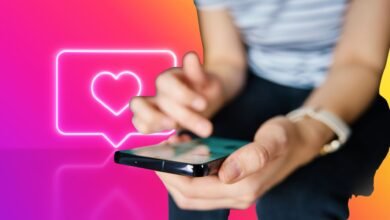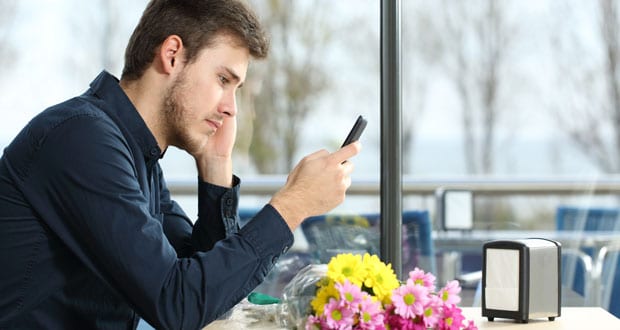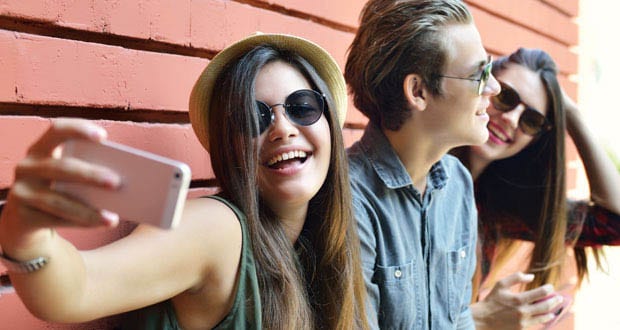Selfie-Conscious: Social Media’s Association with Social Appearance Anxiety
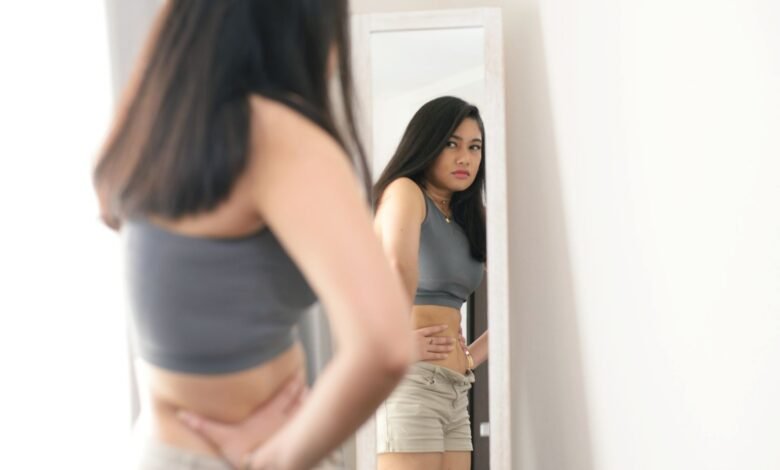
Lydia Tesfaye
National University
Alycia Harris
National University
Abstract
The quantitative correlational study investigated the association between social media use and social appearance anxiety while examining the moderating role specific platform preferences play. The participants (n =174) completed a survey that measured social media use and social appearance anxiety, as well as indicated their preferred social media platform. A Spearman’s rank correlation analysis and a moderation analysis through Hayes PROCESS Macro were conducted utilizing SPSS. The results of the analyses indicated a moderate positive association between social media use and social appearance anxiety, rs(172) = .44, p = < .001. Social media platform preference did not play a significant role in moderating the association, F(9, 162) = .46, p = .763, R2 =.01. These results indicated that increased social media usage, no matter the platform, was associated with increased social appearance anxiety. It may be beneficial for clinicians to explore the amount of social media usage with clients struggling with social appearance anxiety.
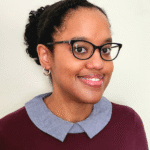
Lydia Tesfaye
Dr. Lydia Tesfaye is a psychometrist at Isaac Health. She has a broad range of research interests, including how various forms of media relate to mental health. Dr. Tesfaye has completed her Ph.D. in General Psychology at National University. She plans to continue her career in the psychological field and hopes to contribute more research to better aid in the understanding of psychological disorders.
Contact: tesfayelydia@gmail.com
 Alycia Harris
Alycia Harris
Dr. Alycia Harris is an educator and researcher in psychology and business. She holds a Ph.D. in General Psychology with a specialization in Research and Evaluation, an MBA, and an MS in Human Resources Management, along with formal education in marketing. Dr. Harris’s career reflects her passion for exploring the intersection of business and psychology.
Her fascination with this field is deeply rooted in her diverse professional experiences, which include serving as a firefighter, working in defense contracting, and teaching as a faculty member in higher education. These roles gave her a rich perspective on organizational dynamics and human behavior, fueling her dedication to helping individuals and teams thrive.
With over 35 years of experience in training and development, Dr. Harris is skilled in creating impactful learning environments. She loves being a dissertation chair, guiding doctoral students through the challenges of their research journeys. Her current research focuses on systems theories in coaching and the application of systems theories to the dissertation student experience.
Dr. Harris’s research portfolio includes studies on cognitive apprenticeships, the social construction of knowledge, teaching research to online students, the use of video feedback in online education, intelligence profiling in political psychology, governance among part-time faculty, and coaching. These efforts reflect her deep commitment to advancing knowledge and practice in her field.
Introduction
As of 2023, over 4.9 billion individuals have social media accounts (Thakur, 2023). In the United States, social media use among adults has grown from 5% in 2005 to 79% in 2019 (Ortiz-Ospina, 2019). It is estimated that one in three people worldwide uses social media. Social media has become widely accessible, and individuals can utilize it for various reasons, including news, finding jobs, making new friends, and connecting with loved ones. While social media can provide many benefits, there can also be some downsides, particularly surrounding excessive use (Zsila & Reyes, 2023).
With the rise of social media usage, there has been increased interest in investigating its impact on mental health. Past research has shown that excessive usage of social media platforms, such as Facebook and Twitter (X), is associated with increased symptoms of depression, anxiety, and stress (Karim et al., 2020). Excessive social media use has also been associated with poor sleep quality, body dissatisfaction, and loneliness (Sadagheyani & Tatari, 2020). User posts of photos and other content about their lives make it easier for others to make judgments about that individual and engage in unhealthy social comparisons (Braghieri et al., 2022). This has led researchers to examine the association between social media usage and social appearance anxiety (Papapanou et al., 2023).
Literature Review
Social Media and Social Appearance Anxiety
Social appearance anxiety is defined as a type of social anxiety in which an individual experiences fear that they will be negatively evaluated by others based on their physical appearance (Hart et al., 2008). The term originated in 2008 with the development of the Social Appearance Anxiety Scale (SAAS), a significant milestone in differentiating between general social anxiety and anxiety related to one’s appearance. Individuals with social appearance anxiety will often feel a great deal of anxiety or tension when they believe that their external appearance is being assessed by others (Hart et al., 1989). It has been posited that this intense fear of negative evaluation leads to the need to create a positive impression on others during social interactions (Baltacı et al., 2021).
Several studies have linked social appearance anxiety to increased rates of body image disturbances and disordered eating (Claes et al., 2012; Levinson & Rodebaugh, 2012). Individuals with social appearance anxiety also tend to have a negative self-view of themselves based on their body/appearance (Aslan & Tolan, 2022; Korkmazer et al., 2021). The negative self-perception of their bodies has been shown to override their thoughts and cause extreme anxiety in social situations, triggered by the fear of negative evaluation. Social appearance anxiety may also lead to individuals attempting to hide or cover up parts of their body that they deem to be unattractive (Baltacı et al., 2021).
Because of the over fixation on bodily/physical appearance, individuals with social appearance anxiety tend to prefer non-face-to-face interactions or online interactions over in-person ones (Weinstein et al., 2015). While the usage of social media may allow individuals with social appearance anxiety to avoid in-person social situations that expose them to evaluation based on physical appearance, it is not without some risks. Correlational studies consistently show that social media usage is associated with body image concerns among young women and men, and longitudinal studies suggest that this association may strengthen with continued use. Additionally, appearance comparisons play a role in the relationship between social media and body image (Fardouly & Vartanian, 2016).
Social media users frequently upload idealized images of themselves that have been altered or edited to make physical features more attractive. While some research suggests that young people use social media for identity exploration by presenting idealized aspects of the potential future selves, the increased pressure of unrealistic or unattainable images has also been shown to intensify social comparison, which may also negatively impact identity development (Manago et al., 2008; Zhao et al., 2008).
There is no official diagnosis for social appearance anxiety within the Diagnostic Statistical Manual of Mental Disorders; thus, it remains a concept that has not been heavily researched (American Psychiatric Association, 2022). Current research looking at the relationship between social appearance anxiety and social media use has yielded mixed results. Some studies have shown that social media use is positively correlated with social appearance anxiety, with increased social media use associated with higher levels of social appearance anxiety (Aslan & Tolan, 2022; Ayar et al., 2018; Amoda et al., 2022; Traş et al., 2019; Zhong, 2022). Other studies have found a mixed correlation (Boursier et al., 2020), no correlation (Caner et al., 2022), or a negative correlation between the variables (Papapanou et al., 2023), depending on the population being studied. The majority of these studies looked at adolescents and young adult populations and focused on a specific platform. Further research exploring more diverse age groups and a variety of social media platforms is needed to provide clarity and expand the topic (Aslan & Tolan, 2022; Papapanou et al., 2023).
Internalization and Upwards Comparison
This study draws on two sociocultural theories as its theoretical framework: Vygotsky’s sociocultural theory (Vygotsky & Cole, 1978) and social comparison theory (Festinger, 1954). These theories provide the rationale for how individuals internalize appearance ideals and compare with other users while on social media. Sociocultural theory, developed by Vygotsky in 1978, described how individuals learn behaviors through their environment and culture and how social activities and interactions are transformed into internal mental processes (Vygotsky & Cole, 1978). Thompson’s Tripartite Influence Model (TIM) extended the concept of sociocultural foundations of schema internalization but concentrated on the role of social influences on individual development and idealized images to focus on body image and eating disorders (Zhong, 2022).
The TIM assumes that there are three primary sources that influence the development of body image issues: peers, parents, and media. The model suggests that media, including social media, play a significant role by promoting unrealistic beauty ideals, leading to appearance comparisons and internalization of the thin ideal. Research has consistently indicated that media pressures can be a predictor of body dissatisfaction (Rodgers et al., 2015; Danthinne et al., 2022). The relative strength of each influence in the TIM model can vary across individuals and contexts, including different cultures. The influences often interact and work together. For example, social media use can increase peer influence, which then impacts body image.
Social comparison theory, proposed by Festinger (1954), assumes that people determine their own social and personal worth by comparing their abilities, opinions, and other personal characteristics with those of other people. The theory posits that these comparisons can have significant impacts on self-esteem and motivation. This involves evaluating oneself by comparing one’s abilities, opinions, and other personal characteristics with those of other people. The theory posits that these comparisons can have significant impacts on self-esteem and motivation. When objective standards are available, social comparison is a powerful tool for self-improvement and growth. However, when clear, objective means are not readily available, people will still unconsciously compare themselves with others based on subjective interpretations and evaluations of their relative standing within a social context. Upward comparisons, especially in subjective areas like popularity and physical appearance, can lead to negative feelings like dissatisfaction and lowered self-esteem.
Later research by Schachter (1959) expanded upon the theory to include attributes beyond abilities and opinions, such as emotions.
Internalization related to body image refers to how people take in aspects of the ideal physical appearance and associate that ideal appearance with positive concepts, such as success or happiness (Czepczor-Berna et al., 2017).
Internalization of idealized appearance combined with upward social comparison to others who are perceived as superior provides a potential mechanism by which an association between social media use and social appearance anxiety can be explained (Caner et al., 2022). When individuals possess high degrees of internalized views of the ideal body appearance, they will be more likely to compare themselves to the idealized images depicted on social media (Liu, 2022). In turn, social appearance anxiety may rise when an individual feels they have not met those ideals.
Current Study
The purpose of the quantitative correlational study was to examine the association between social media use and social appearance anxiety in adult users and to investigate the extent to which specific platforms moderate the association. Past literature concerning the topic of social media usage and social appearance anxiety has shown contradictory results. By engaging a broader adult age group and investigating differences among platforms, it was hoped that the association could be clarified.
The hypotheses were as follows:
H1: There is a significant positive association between social media use and social appearance anxiety among adult social media users.
H2: A preferred social media platform moderates the association between social media use and social appearance anxiety among adult social media users.
Method
Participants
The sample included in the study included 174 English-speaking adult social media users aged 18 years and older living in the United States. The ages of the participants were 8.6% 18-25 (n = 15), 21.8% 26-35 (n = 38), 32.8% 36-45 (n = 57), 21.8% were 46-59 (n = 38), and 14.9% were 60+ (n = 26). For gender, 47.1% were male (n = 82) and 52.9% were female (n = 92). A simple random sampling method was used to recruit participants. The third-party platform, SurveyMonkey Audience, was used to recruit participants who fit the qualifications for the sample size. This platform uses simple random sampling by selecting participants from a general population pool that fits the study’s criteria (SurveyMonkey, n.d.).
Materials or Instrumentation
The measures used in the study were the Intensity of Social Networking Usage Measure and the Social Appearance Anxiety Scale (SAAS), both demonstrated to be a reliable and valid measure or the variables unders study.
The Intensity of Social Networking Usage Measure was adapted by Park et al. (2012) from Ellison’s 2007 Facebook Intensity scales to measure the intensity of social media use. This measure consists of 7 total items. Five items use a 5-point Likert Scale with a range from 1 (strongly disagree) to 5 (strongly agree). The remaining two items assess a user’s number of social media followers or friends one and user estimates of the time spent on social media per day. The Intensity of Social Networking Usage Measure has demonstrated internal consistency reliability with an alpha coefficient of .875. A factor analysis yielded good construct validity (eigenvalue = 3.993; all items loaded above 0.500).
The SAAS is a measure of social appearance anxiety levels developed by Hart et al. (2008). This measure consists of 16 total items on a 5-point Likert scale with responses ranging from “not at all” to “extremely”. The SAAS includes questions such as: “I feel nervous when having my picture taken,” “I get tense when it is obvious people are looking at me” and “I am concerned people would not like me because of the way I look.” The SAAS has demonstrated internal consistency/reliability with Cronbach’s alpha scores of .94, .95., and .94 across three different samples. In addition, the 4-week test-retest reliability score was r = .84. The SAAS also has a high convergent validity score, indicating similarity to other measures of constructs related to social appearance anxiety and negative body image (r =.76; p<.001). Predictive validity of the SAAS for depression, while not relevant to this study, was also high (p<.001).
Two additional demographic questions were asked to determine each participant’s preferred social media platform and age. The preferred social media platform was used as the moderator variable. While age was not a variable of interest in the study, the researcher wanted a broad representation of age groups for diversity. These demographic questions were created by the researcher.
The study received approval from the National University’s Institutional Review Board (IRB) prior to any data collection (Office for Human Research Protections, 2021). Any risks to participants were minimal. To preserve anonymity, all participants were deidentified. The research materials were stored in a secure, electronic storage accessible only to the researcher.
Procedure
To collect data for the study, participants were asked to complete questionnaires through the SurveyMonkey program. This questionnaire was completed remotely, requiring only Internet access (SurveyMonkey, n.d.). Participants were asked to read and sign an informed consent form before starting the questionnaire. The participants were then asked to complete the questionnaire consisting of the SAAS, Intensity of Social Networking Usage Measure, platform preference and age.
Data Analysis
To analyze the data and address the research questions, Spearman’s rank correlation and Hayes’ PROCESS analysis were utilized. While Pearson’s correlation analysis was considered, the assumption of normality was not met. Therefore, Spearman’s rank analysis was then considered. The Statistical Package for Social Sciences (SPSS) was used to conduct Spearman’s rank correlation.
A Hayes Process analysis was also used to examine social media platforms as a moderating variable to test whether the moderator variable (W) had a direct impact on the correlation between the independent (X) and dependent variable (Y) (Hayes, 2018). This analysis provided more context into the relationship between the independent variable and dependent variable by examining the extent to which the relationship is significant (Hayes, 2018). To conduct this analysis, Hayes Process Macro for SPSS (Model 1) was used.
Results
Participants ranged in ages from 18 to 60+, with the majority of participants ranging from 26 to 59 (76.9%). Concerning the preferred social media platform of participants, a majority preferred Facebook to other social media platforms (49.4%). Instagram was the second most preferred platform (25.3%), and Twitter (X) was the third (13.8%). This distribution also seems to reflect national statistics, as the majority of social media users in the United States have a Facebook account in comparison to other social media platforms. Facebook also has the most active users of any other social media platform (Ortiz-Ospina, 2019). Below is a table representing the distribution among the participants involved in this study (see Table 1).
Table 1: Social Media Platform
The results of the Spearman analysis indicated a significant positive correlation between social media use and social appearance anxiety, rs(172) = .44, p = < .001. This would indicate a moderate positive association between social media use and social appearance anxiety (see Table 2).
Table 2: Social Appearance Anxiety and Social Media Use: Spearman’s rho correlations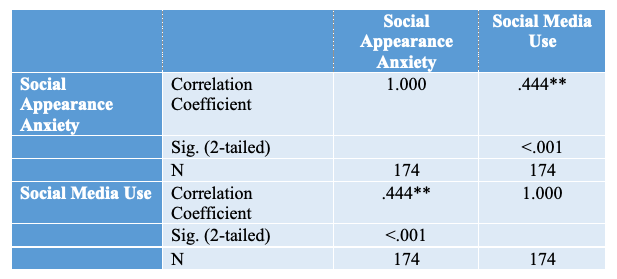 **. Correlation is significant at the 0.01 Level (2-tailed)
**. Correlation is significant at the 0.01 Level (2-tailed)
The results of the moderation analysis indicated that the overall model was significant, F(9, 162) = 7.78, p = .001, R2 =.30 (see Table 4). Concerning social media use, the results indicated that as social media use increased, so did social appearance anxiety, making social media use a significant predictor of social appearance anxiety, b = 1.20, t(162) = 3.72, p = .001 (see Table 4).
The preferred social media platform was tested as a moderator variable. The model compared the differences in social appearance anxiety against each of the different social media platforms. Facebook was used as the anchor reference point for comparison to other social media platforms (Instagram, TikTok, Twitter (X), and Snapchat) since Facebook was identified as the most preferred platform. Comparisons among the platforms were made in the Hayes Process output. The output coded these different comparisons as W1 (Facebook x Instagram), W2 (Facebook x TikTok), W3 (Facebook x Twitter/X), and W4 (Facebook x Snapchat) as shown in Table 3. The participants’ preferred platforms were treated as nominal categorical variables, specifically nominal with no order or rank.
Table 3: Comparison of Social Media Platforms by Differences in Social Appearance Anxiety Levels
- Differences in social appearance anxiety levels between Facebook and Instagram preferences.
- Differences in social appearance anxiety levels between Facebook and TikTok preferences.
- Differences in social appearance anxiety levels between Facebook and Twitter (X) preferences.
- Differences in social appearance anxiety levels between Facebook and Snapchat preferences.
W2 compares the differences in social appearance anxiety levels between social media users who prefer Facebook and users who prefer TikTok. Those who preferred TikTok were shown to have higher levels of social appearance anxiety compared to those who preferred Facebook. Based on the results of the analysis, these differences were found to be statistically significant, b = 10.44, t(162) = 2.37, p = .019 (see Table 4). However, this was a main effect comparison and not evidence of moderation.
Table 4: Outcome Variable: Social Appearance Anxiety
**. The main effect is significant at the .05 level
Table 5: Test of the highest order unconditional interaction(s):
The Hayes Process Macro also analyzed the overall unconditional interaction of social media use as a predictor of social appearance anxiety, considering the preferred social media platform as a moderating variable. The results of the analysis indicated that there was no statistically significant interaction, F(9, 162) = .46, p = .763, R2 =.01 (see Table 7). Therefore, the preferred social media platform was not shown to be a significant moderator of the association between social media use and social appearance anxiety.
When examining the conditional effects of the focal predictor at values of the moderator, the results showed that social media use significantly predicted social appearance anxiety in all platforms (Facebook, Instagram, Twitter (X), TikTok) except Snapchat, b = -.50, t(162) = -.23, p = .816. Out of all the participants in the study, only 4 reported Snapchat to be their preferred social media platform (2.3%). The small group size in comparison to the other platforms likely led to this association being insignificant. Overall, the preferred social media platform was not found to be a significant moderator in the association between social media use and social appearance anxiety.
Discussion
The current study examined the relationship between social appearance anxiety and social media use, along with the extent to which the preferred social media platform moderates the association. Based on the results of the study, it was found that increased social media use was positively correlated with increased social appearance anxiety in adult social media users. However, the preferred social media platform did not play a significant role in moderating the correlation.
The implications of these findings suggest that increased social media use can have a harmful association with mental health, specifically in terms of social appearance anxiety. This would also be in alignment with previous literature suggesting that excessive social media use is linked to increased anxiety, depression, poor sleep quality, and body image disturbances (Sadagheyani & Tatari, 2020; Vannucci et al., 2017). Increased social media use for long periods of time can be associated with social appearance anxiety (Khan, 2024). This can be detrimental to an individual’s mental health, leading to disruptions in everyday life.
These findings would also suggest that increased social media use is associated with rising levels of social appearance anxiety, no matter which platform an individual prefers to use for their time online. While some social media platforms involved in the current study (TikTok) were associated with higher levels of social appearance anxiety in comparison to others (Facebook), these differences ultimately had no impact on the association between social media use and social appearance anxiety. This suggests that social media use in high amounts, irrespective of platform, can create opportunities for increased social comparison and greater levels of social appearance anxiety. These implications are consistent with previous studies looking at different social media platforms, such as TikTok (Amoda et. al, 2022) and Facebook (Traş & Baltacı, 2019).
Limitations and Future Research
The proposed study had limitations. Since participation was voluntary, participants could drop out of the study at any point during its course, leading to incomplete/missing data. Participants were restricted to English-speaking adults living in the United States, limiting any generalizability to non-English-speaking populations.
Another limitation was the measurement of the preferred platform. Only five social media platforms were examined as a moderator variable: Facebook, Twitter (X), Instagram, Snapchat, and TikTok. Therefore, the results cannot be applied to additional social media platforms. Further, while participants may have been active on several different social media platforms, the study only allowed participants to select one preferred platform out of these five choices. The study also did not measure time spent on each social media platform.
Future research can seek to recruit participants from other countries outside of the United States. This may help gain different perspectives on the topic. Future research can also examine other social media platforms to see if these findings are replicated on different platforms. For example, a platform called Xiaohungshu (RedNote) is extremely popular in China (Zhong, 2022). In addition, it would be beneficial to study the amount of time spent on each platform, as this study only measured platform preference.
Finally, future research can also benefit from exploring different research methods, such as qualitative, longitudinal, or mixed methods. Similarly, other variables identified in the literature as relevant to the relationships between social appearance anxiety and social media can be investigated, such as perfectionism, peer pressure, bullying, active vs. passive use, and text vs. image posting.
References
Amoda, M., Domingo, N., Gasgonia, L., & Relleve, C. (2022). Self-Esteem and Social Appearance Anxiety of TikTok Users: Appraising Social Support as Probable Moderator. Int. J. Sci. Res. in Multidisciplinary Studies, 8(4), 47-51. https://www.isroset.org/journal/IJSRMS/full_paper_view.php? paper_id=2793#parentHorizontalTab3
American Psychiatric Association. (2022). Diagnostic and statistical manual of mental disorders (5th ed., text rev.). https://doi.org/10.1176/appi.books.9780890425787
Aslan, H. R., & Tolan, Ö. Ç. (2022). Social appearance anxiety, automatic thoughts, psychological well-being, and social media addiction in university students. International Education Studies, 15(1), 47-62. https://doi.org/10.5539/ies.v15n1p47
Ayar, D., Gerçeker, G. Ö., Özdemir, E. Z., & Bektas, M. (2018). The effect of problematic internet use, social appearance anxiety, and social media use on nursing students’ nomophobia levels. CIN: Computers, Informatics, Nursing, 36(12), 589-595. https://doi.org/10.1097/CIN.0000000000000458
Baltacı, U. B., Yilmaz, M., & Traş, Z. (2021). The Relationships between Internet Addiction, Social Appearance Anxiety and Coping with Stress. International Education Studies, 14(5), 135-144. https://doi.org/10.5539/ies.v14n5p135
Boursier, V., Gioia, F., & Griffiths, M. D. (2020). Do selfie-expectancies and social appearance anxiety predict adolescents’ problematic social media use?. Computers in Human Behavior, 110, 106395. https://doi.org/10.1016/j.chb.2020.106395
Braghieri, L., Levy, R. E., & Makarin, A. (2022). Social media and mental health. American Economic Review, 112(11), 3660-3693. https://doi.org/10.1257/aer.20211218
Caner, N., Efe, Y. S., & Başdaş, Ö. (2022). The contribution of social media addiction to adolescent LIFE: Social appearance anxiety. Current Psychology, 41(12), 8424–8433. https://doi.org/10.1007/s12144-022-03280-y
Claes, L., Hart, T. A., Smits, D., Van den Eynde, F., Mueller, A., & Mitchell, J. E. (2012). Validation of the social appearance anxiety scale in female eating disorder patients. European Eating Disorders Review, 20(5), 406-409. https://doi.org/10.1002/erv.1147
Danthinne, E. S., Giorgianni, F. E., Ando, K., & Rodgers, R. F. (2022). Real beauty: Effects of a body‐positive video on body image and capacity to mitigate exposure to social media images. British Journal of Health Psychology, 27(2), 320-337. https://doi.org/10.1111/bjhp.12547
Fardouly, J., & Vartanian, L. R. (2016). Social media and body image concerns: Current research and future directions. Current opinion in psychology, 9, 1-5. https://doi.org/10.1016/j.copsyc.2015.09.005
Festinger, L. (1954). A theory of social comparison processes. Human relations, 7(2), 117-140. https://doi.org/10.1177/001872675400700202
Hart, T. A., Flora, D. B., Palyo, S. A., Fresco, D. M., Holle, C., & Heimberg, R. G. (2008). Development and examination of the social appearance anxiety scale. Assessment, 15(1), 48-59. https://doi.org/10.1177/1073191107306673
Hart, E. A., Leary, M. R., & Rejeski, W. J. (1989). Tie measurement of social physique anxiety. Journal of Sport and exercise Psychology, 11(1), 94-104. https://doi.org/10.1123/jsep.11.1.94
Hayes, A.F. (2018). Introduction to Mediation, Moderation, and Conditional Process Analysis: A Regression-Based Approach. Second edition. New York (N.Y.): Guilford press.
Karim, F., Oyewande, A. A., Abdalla, L. F., Ehsanullah, R. C., & Khan, S. (2020). Social media use and its connection to mental health: a systematic review. Cureus, 12(6). https://doi.org/10.7759/cureus.8627
Khan, A. (2024). Impact of social media usage and social appearance anxiety on social relationship and self-esteem among young adults. International Journal of Interdisciplinary Approaches in Psychology, 2(5), 1446-1461. https://psychopediajournals.com/index.php/ijiap/article/view/431
Korkmazer, B., Yurdakul, F., Şükriye, Ö. Z. E. R., Yeşil, Ö., Coşkuntuncel, C., Sualp, B. Ü. Ş. R. A., … & Şahin, E. M. (2021). A Cross-Sectional Study on the Relationship between Smartphone Addiction and Depression, Anxiety and Social Appearance Anxiety in Young Adults. Journal of Istanbul Faculty of Medicine, 85(1), 91-97. https://doi.org/10.26650/IUITFD.907719
Levinson, C. A., & Rodebaugh, T. L. (2012). Social anxiety and eating disorder comorbidity: The role of negative social evaluation fears. Eating behaviors, 13(1), 27-35. https://doi.org/10.1016/j.eatbeh.2011.11.006
Manago, A. M., Graham, M. B., Greenfield, P. M., & Salimkhan, G. (2008). Self-presentation and gender on MySpace. Journal of Applied Developmental Psychology, 29(6), 446-458. https://doi.org/10.1016/j.appdev.2008.07.001
Office for Human Research Protections (OHRP). (2021b, December 9). Register irbs & obtain fwas. HHS.gov. https://www.hhs.gov/ohrp/register-irbs-and-obtain-fwas/index.html
Ortiz-Ospina, E. (2019) – “The rise of social media”. Published online at OurWorldInData.org. Retrieved from: ‘https://ourworldindata.org/rise-of-social-media‘ [Online Resource]
Papapanou, T. K., Darviri, C., Kanaka-Gantenbein, C., Tigani, X., Michou, M., Vlachakis, D., Bacopoulou, F. (2023). Strong correlations between social appearance anxiety, use of social media, and feelings of loneliness in adolescents and young adults. International Journal of Enviornmental Research and Public Health, 20(5), 4296. https://doi.org/10.3390/ijerph20054296
Park, Kyung-Gook, Sehee Han, and Lynda Lee Kaid. 2012. “Intensity of Social Networking Usage Measure.” PsycTESTS, January. https://doi.org/10.1037/t28611-000. Rodgers, R. F., McLean, S. A., & Paxton, S. J. (2015). Longitudinal relationships among internalization of the media ideal, peer social comparison, and body dissatisfaction: implications for the tripartite influence model. Developmental psychology, 51(5), 706. https://doi.org/10.1037/dev0000013
Sadagheyani, H. E., & Tatari, F. (2020). Investigating the role of social media on mental health. Mental Health and Social Inclusion, 25(1), 41-51. https://doi.org/10.1108/MHSI-06-2020-0039
Scully, M., Swords, L., & Nixon, E. (2023). Social comparisons on social media: Online appearance-related activity and body dissatisfaction in adolescent girls. Irish Journal of Psychological Medicine, 40(1), 31-42. https://doi.org/10.1017/ipm.2020.93
SurveyMonkey. (n.d.). How to collect a simple random sample. SurveyMonkey. https://www.surveymonkey.com/market-research/resources/how-to-collect-simple-random-sample/
Thakur, N. (2023). Social Media Mining and Analysis: A Brief Review of Recent Challenges. Information, 14(9), 484. https://doi.org/10.3390/info14090484
Traş, Z., Öztemel, K., & Baltacı, U. (2019). Role of Problematic Internet Use, Sense of Belonging and Social Appearance Anxiety in Facebook Use Intensity of University Students. International Education Studies (IES), 12(8). https://doi.org/10.5539/ies.v12n8p1
Vannucci, A., Flannery, K. M., & Ohannessian, C. M. (2017). Social media use and anxiety in emerging adults. Journal of affective disorders, 207, 163-166. https://doi.org/10.1016/j.jad.2016.08.040
Vygotsky, L. S., & Cole, M. (1978). Mind in society: Development of higher psychological processes. Harvard university press. https://doi.org/10.2307/j.ctvjf9vz4
Weinstein, A., Dorani, D., Elhadif, R., Bukovza, Y., Yarmulnik, A., & Dannon, P. (2015). Internet addiction is associated with social anxiety in young adults. Annals of clinical psychiatry, 27(1), 4-9. https://doi.org/10.1093/med/9780199380183.003.0001
Zhao, S., Grasmuck, S., & Martin, J. (2008). Identity construction on Facebook: Digital empowerment in anchored relationships. Computers in human behavior, 24(5), 1816- 1836. https://doi.org/10.1016/j.chb.2008.02.012
Zhong, Y. (2022). The Influence of Social Media on Body Image Disturbance Induced by Appearance Anxiety in Female College Students. Psychiatria Danubina, 34(2), 638-644. https://hrcak.srce.hr/282334
Zsila, Á., & Reyes, M. E. S. (2023). Pros & cons: impacts of social media on mental health. BMC psychology, 11(1), 201. https://doi.org/10.1186/s40359-023-01243-x



